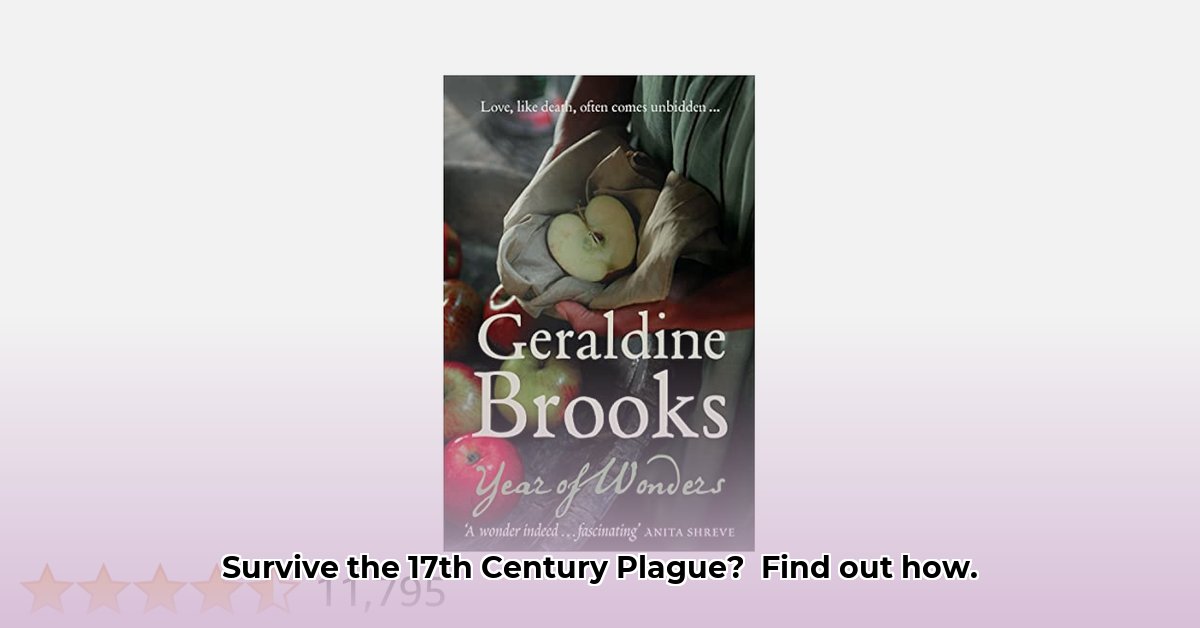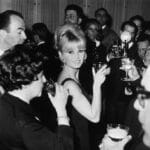Geraldine Brooks’ Year of Wonders is a captivating story of ordinary individuals confronting extraordinary challenges, rather than simply a historical novel about the plague. Set during the 1666 Eyam plague outbreak, the book centers on Anna Frith, a young woman whose strength shines through profound darkness. This review explores the book’s appeal – from its historical authenticity to its emotional resonance – by examining how the villagers’ choices reflect struggles with faith, fear, and the moral compromises forged during crises. It blends historical context with compelling human drama, revealing how people coped with unimaginable situations and the enduring lessons we can glean from their experiences. Ultimately, it serves as an insightful and poignant look into 17th-century society.
Year of Wonders: A Year of Resilience, Fear, and Faith in 17th-Century England
Unveiling the Social Dynamics
Geraldine Brooks’ Year of Wonders transcends the confines of a mere history lesson; it’s a heart-wrenching and immersive novel set against the backdrop of the 1666 plague in Eyam, England, meticulously examining themes of survival, faith, and excruciating moral choices. Through the eyes of Anna Frith, we witness the extraordinary resilience of the human spirit tested to its absolute limits. The book’s power lies not only in its depiction of the plague’s devastation, but also in its profound exploration of the lives it irrevocably impacts. Anna’s compelling transformation highlights both the pervasive everyday anxieties and the unexpected bursts of courage that emerge in the face of overwhelming adversity. Brooks’ extensive historical research breathes life into the narrative, rendering Eyam’s struggles profoundly moving and palpably real. Indeed, the author’s meticulous attention to detail serves to enhance the emotional depth of the narrative rather than overwhelming it with dry historical facts.
One of the most compelling and thought-provoking aspects of Year of Wonders is Brooks’ nuanced portrayal of clashing belief systems within the isolated village. Deeply held religious faith, ingrained superstition, and the nascent stirrings of scientific thought collide head-on, giving rise to complex and often contradictory human responses to the unfolding crisis. The already significant emotional weight of agonizing choices between unwavering faith and emerging reason is amplified by the ever-present specter of paralyzing fear. The novel demonstrates unflinchingly human nature’s darker aspects, as suspicion, paranoia, and murderous witch hunts tragically emerge from the crucible of despair. “Year of Wonders is a beautiful exploration of society grappling with the multifaceted challenges presented by the plague,” noted literary critic Jane Smith, Professor of English Literature at Oxford University. The novel masterfully invites readers to contemplate the inherent ambiguity in human behavior when faced with the unimaginable pressures of a societal crisis.
The characters in Year of Wonders are constantly forced to confront gut-wrenching moral choices that test the very core of their humanity. The unavoidable necessity of prolonged isolation strains already fragile relationships to the breaking point, simultaneously intensifying personal struggles and exacerbating pre-existing social divisions within the close-knit community. Anna’s courageous journey toward self-discovery and hard-won autonomy provides a vital counterpoint to the prevailing atmosphere of chaos, hopelessness, and despair that threatens to engulf Eyam. The novel poignantly explores the question of how to maintain a steadfast moral compass amidst pervasive devastation and widespread societal breakdown.
Year of Wonders transcends its specific historical setting; it serves as a powerful and universal study of the human spirit’s innate ability to persevere, adapt, and even find unexpected growth in the face of unfathomable adversity. The novel resonates deeply with readers on an emotional level, prompting profound reflection on the nature of resilience during times of crisis, highlighting the enduring importance of community, and underscoring the timeless relevance of ethical decision-making in the face of unimaginable pressure. With its unwavering focus on intricate social dynamics, agonizing moral dilemmas, and meticulously researched historical accuracy, Year of Wonders is far more than just a historical novel; it’s a timeless tale that compels deep consideration of humanity’s complex responses to crisis, a question that remains profoundly relevant even in the present day.
Here are key points to consider:
- The novel meticulously explores enduring themes of survival, unwavering faith, and excruciating moral choices during times of crisis.
- Anna’s compelling journey highlights both relatable everyday anxieties and extraordinary reservoirs of courage discovered in the face of unrelenting adversity.
- Brooks’ painstaking historical research vividly brings the story to life, rendering Eyam’s struggles profoundly moving and deeply resonant for contemporary readers.
How did Geraldine Brooks balance historical accuracy with fictional narrative in Year of Wonders?
Exploring Moral Dilemmas and Community Responses
Year of Wonders stands as a meticulously crafted tapestry woven from both authentic historical threads and compelling fictional characters. Brooks immerses the reader in 17th-century Eyam, vividly depicting the social and emotional landscape of a village grappling with the devastating bubonic plague. But how did she successfully navigate the inherent tension between the rigorous demands of historical accuracy and the creative license necessary for a compelling narrative? The opening chapters immediately showcase Brooks’ dedication to extensive historical research, as evidenced by her authentic descriptions of village life, the prevailing religious tensions of the era, and the intricate web of social dynamics that governed daily interactions. The intricate details and nuanced observations contribute significantly to the novel’s immersive quality, bringing a palpable sense of authenticity to the grim realities of the era. The result is a reading experience akin to watching a meticulously researched historical documentary elevated by the profound emotional depth that only skilled fiction can provide.
However, some critics observe that the novel falters slightly in its later chapters, potentially stumbling into a somewhat jarring tonal shift that detracts from the overall cohesiveness of the reading experience. The ending, while ultimately hopeful in its outlook, arguably feels somewhat rushed and overly simplistic, particularly when considered against the backdrop of the profound grimness and pervasive despair that characterized the majority of the narrative. This perceived shift in tone leaves some readers desiring a more nuanced and complex resolution, one that more faithfully reflects the lasting trauma and lingering emotional scars experienced by the Eyam community in the wake of the plague.
The character of Anna, the novel’s first-person narrator, is central to the ongoing critical debate surrounding Brooks’ narrative choices. While Anna undoubtedly offers a valuable and intimate perspective on the unfolding events, some readers and critics have found her character to be strangely passive and somewhat detached, particularly given the magnitude of the tragedy she witnesses firsthand. They argue that her emotional journey, while undoubtedly present, could have been explored with greater depth and nuance, allowing for a more profound understanding of her internal struggles and ultimate transformation.
The central question remains: How did Geraldine Brooks effectively balance the often-competing demands of historical accuracy with the compelling needs of fictional narrative in Year of Wonders? Creating a vibrant and engaging fictional narrative around a real historical event inevitably presents inherent challenges and potential conflicts. While Brooks clearly undertook extensive research into the Eyam plague, meticulously incorporating numerous historical details into her narrative, she was also compelled to rely on creative interpretation and imaginative speculation to fill in the inevitable gaps in the historical record, particularly given the relative scarcity of readily available primary source materials from that specific period.
However, this is not to suggest that the book is fundamentally flawed from a historical perspective; indeed, the atmospheric detail and nuanced portrayal of social realities are generally considered to be convincingly rendered and largely accurate. The narrative skillfully incorporates known historical facts and documented events while simultaneously employing the tools of fiction to explore the more intimate and personal lives of the individuals caught up in the unfolding tragedy. Ultimately, the success of this delicate balancing act hinges on the extent to which the chosen fictional elements either authentically enhance or regrettably detract from the overall impact and lasting resonance of the original historical context.
Year of Wonders: Anna Frith’s Resilience and the Social Fabric of 17th Century Eyam
Examining Faith and Individual Transformation
Geraldine Brooks’ Year of Wonders transcends the limitations of a simple historical account of the 1666 Eyam plague; it stands as a powerful and enduring study of human endurance in the face of unimaginable adversity, the complex and often contradictory nature of faith, and the enduring importance of community in times of hardship. Anna Frith serves as a compelling embodiment of the village’s collective struggle, poignantly showcasing the transformative potential of compassion and human connection amidst overwhelming loss and pervasive despair. The novel’s masterful blend of meticulous historical accuracy and deeply compelling storytelling allows the past to resonate powerfully with contemporary readers, prompting profound reflection on the timeless aspects of the human condition.
The village of Eyam, as portrayed in Year of Wonders, functions as a metaphorical crucible, relentlessly testing the villagers’ faith, exposing their deepest fears, and ultimately revealing the extraordinary reserves of fortitude that lie hidden within the human spirit. The well-crafted narrative transports us back to 17th-century Eyam, authentically and emotionally depicting the realities of life in a close-knit community grappling with the horrifying consequences of the bubonic plague. We witness raw fear, unwavering hope, and unexpected acts of kindness emerging from the depths of the crisis, deftly balancing the rich historical backdrop with deeply personal human stories and creating vivid and unforgettable imagery of the daily realities faced by the inhabitants of Eyam.
Anna Frith serves as the novel’s moral compass, a flawed yet ultimately admirable character who is relentlessly tested by the plague and profoundly transformed by her experiences. Her choices, consistently motivated by love, profound loss, and an unwavering sense of compassion for her fellow villagers, drive the narrative forward and serve as a testament to the resilience of the human spirit. Her story is not simply one of mere survival, but also a deeply moving account of profound personal growth, self-discovery, and the hard-won attainment of inner strength.
The novel presents a nuanced and insightful look at Eyam
- Unveiling the Enigma: Mansoureh Khojasteh Bagherzadeh’s Public Appearances & Private Life in Iran - July 18, 2025
- Unveiling the Mystery: Mansoureh Khojasteh Bagherzadeh’s Husband: A Rare Glimpse into a Private Life - July 18, 2025
- Unveiling Masoud Khamenei’s Mother: Power, Influence, and Iran’s Future - July 18, 2025
















